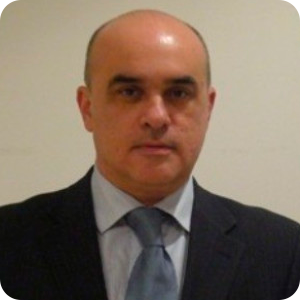In response to growing security concerns and the pressure placed on the EU by one of its closest and oldest allies – the USA, the European Commission has now decided to “turn the page” in the defense sector by launching its Readiness 2030 plan (initial name ReArm Europe). The plan foresees the release of up to EUR 800 billion for EU member states to spend on defense. This ambitious initiative marks a pivotal shift in Europe’s defense strategy, positioning the Union as being able to play a more significant role in global security and strengthen its support for Ukraine. The initiative has been met with both confidence and skepticism by experts who are concerned that other plans and objectives will be overshadowed by significant investments in the defense sector. Let’s learn what DevelopmentAid member-experts have to say in this regard.
Key Takeaways:
- Europe is facing a serious security challenge, driven by Russia’s aggression in Ukraine and intensified by shifts in U.S. external policy following President Trump’s inauguration in January 2025.
- According to experts, by earmarking 2% of its GDP for defense and diverting 10% of its development aid to Ukraine, the EU risks weakening the Union’s position in Africa and Asia, where China already dominates with investments that are five times higher.
- Some experts state that by increasing investments in defense, the EU aims to lessen its reliance on allies such as the United States and enable a more autonomous and assertive role in international security affairs.
- Some experts believe that a balance is possible when the focus of aid is on dual-purpose investments that have the potential to address both defense needs and developmental goals.
- At the same time, other experts point out that this is a short game, and the cost will be paid by future generations in financial terms, and also in living standards, as vital attention to and investments in climate action, international development, research, and education are reduced.
DevelopmentAid: How can the EU balance its new defense spending initiatives with its long-term commitments to international development, particularly in countries that depend on EU support for socio-economic progress?

“The EU can balance its defense spending with its development commitments by strategically prioritizing initiatives that support both security and socio-economic growth. The key here is to focus on dual-purpose investments that have the potential to address both defense needs and developmental goals simultaneously. For example, we’ve seen first-hand in conflict-affected states such as Syria, following the collapse of the Assad regime, how a massive leadership vacuum has emerged that leaves both security and development efforts at a standstill. This gap presents a critical opportunity for the EU to step in, not only as a security provider but as a partner in rebuilding socio-economic stability. A vital but simple solution could be investments in dual-use infrastructure, such as energy, transport, and healthcare, which can boost both security and socio-economic progress, ensuring that defense efforts directly contribute to long-term development. The EU can also leverage its partnerships with the UN and the World Bank to ensure that humanitarian and development initiatives remain well-funded, even as it strengthens its military capabilities. As global leadership vacuums grow in fragile regions, particularly in the wake of geopolitical shifts, the EU is uniquely positioned to fill this gap and provide stability through a coordinated defense and development approach.”

“History teaches us that an arms race destroys progress. The USSR, which spent 20% of its GDP on the military, collapsed under the weight of economic imbalances. Today, the EU, by devoting 2% (and growing) of its GDP ($258 billion) to defense and diverting 10% of development aid to Ukraine, risks weakening its position in Africa and Asia, where China already dominates with investments that are five times higher. However, security should not be blind – the lessons of the 1930s, when reduced international support paved the way for dictators, are more relevant than ever. The solution lies in synergy. Dual-use infrastructure, such as ports in Senegal or digital networks in Southeast Asia, can serve both development and military logistics. This could be financed through taxes on excess corporate profits and revenues from over €200 billion in frozen Russian assets, thereby avoiding cuts to climate programs (30% of the EU budget). If the EU legislates a minimum of aid (0.7% of GDP, the UN target), it will retain its role as a global donor, rather than repeating the fate of the USSR, where guns replaced oil.”

“Balancing the EU’s new defense spending initiatives with its long-term commitments to international development requires a strategic approach that ensures security investments do not come at the expense of socio-economic progress, particularly in partner countries that rely on EU support. The EU can try to prioritize dual-use investments and focus on technologies and infrastructures that serve both defense and civilian purposes, such as cybersecurity, satellite systems, and transport networks. Investments in resilience and crisis response (e.g., disaster relief capabilities) can serve both security and development goals. At the same time, the Union should enhance cooperation with developing nations in security-related areas such as counterterrorism, maritime security, and cyber defense, while ensuring these partnerships also promote economic development and also expand the European Peace Facility (EPF) to provide both security assistance and socio-economic stabilization programs in fragile states – mainly the vicinity – Sahel, Caucasus, and the Middle East.”

“The EU must align its increased defense spending with its long-term commitments to international development. This balance can be achieved through a dual-track approach: ensuring that defense investments support economic resilience and stability in partner countries while maintaining dedicated funding streams for development aid. The EU should leverage its Global Gateway initiative and development finance instruments to sustain socio-economic progress while improving security cooperation with developing nations. Transparent governance and adherence to international humanitarian law will be essential to prevent defense priorities from overshadowing vital development assistance.”

“One way to achieve balance would be to have a comprehensive common threats analysis and strategy within the EU that is not just limited to invasion scenarios. Threats to the EU’s security and stability range from nuclear war, accelerating global warming, the concentration of economic power, more authoritarian rules, organized crime, and food security to future pandemics and migration flows. A proposal to help the discussion is to revisit the concept of human security to define what we are really protecting.”
DevelopmentAid: How does the Readiness 2030 plan shape the future trajectory of the EU’s strategic autonomy, and what implications could it have for the Union’s role in global security and diplomacy?

“The Readiness 2030 plan marks a crucial moment for the EU to assert its strategic autonomy, giving it independence to make decisions in defense matters without relying on external powers like the U.S. As global security dynamics shift, the EU is becoming more capable of acting independently in the face of rising global tensions, particularly in areas like Eastern Europe and the Middle East. With enhanced military capabilities, the EU can be more proactive and agile in addressing security crises, improving peacekeeping operations, and shaping global security frameworks. From my own Irish and broader European perspective, this shift is especially important. Smaller EU member states like my own, which have historically prioritized neutrality and peacebuilding, now have a greater opportunity to contribute to the EU’s collective security efforts. The ReArm Europe plan ensures that countries like Ireland can rely on EU-wide security, reducing the need for dependency on external powers while maintaining European values of cooperation and peace. In the long run, the plan provides the EU with the tools to take a leading role in global diplomacy, shaping how conflicts are resolved and contributing to international security in ways that align with the EU’s core principles of peace, diplomacy, and human rights.”

“Readiness2030 is a €150 billion gamble on the EU emerging as a “third force” in a world dominated by the U.S. and China. Projects like Eurodrone and the FCAS fighter aim to reduce dependence on U.S. technology, while PESCO consolidates the 27 disparate defense systems into a single framework. However, autonomy does not equate to isolation. Just as the 1947 Marshall Plan restored Europe through economic means, Readiness 2030 should serve as a tool of ‘smart power’, integrating military investments with climate initiatives and digital diplomacy. Nevertheless, the risks persist: Poland, which spends 4% of its GDP on defense, relies on NATO, whereas France, which maintains a nuclear shield, advocates for independence. The history of the Cold War serves as a cautionary tale: the arms race crippled the USSR, and the isolationism of the 1930s enabled Hitler to conquer Europe. The EU must steer clear of these extremes by addressing hybrid threats (cyberattacks, disinformation), while allowing NATO to provide a nuclear umbrella. The success of Europe’s Readiness 2030 plan will ultimately dictate whether the EU becomes the architect of a multipolar world or a prisoner of its own aspirations.”

“Readiness 2030 represents a significant step towards greater EU strategic autonomy, aiming to empower the Union to take a more proactive and independent role in global security and diplomacy. Reducing dependence on external allies: by investing in its own defense capabilities, the EU aims to lessen its reliance on allies such as the United States, enabling a more autonomous and assertive role in international security affairs. Additionally, the focus on European suppliers has raised concerns among allies like the U.S. who view restrictions on non-EU manufacturers as unfavorable. This, of course, could lead to diplomatic tensions and affect transatlantic defense cooperation. However, the plan will commit all countries to contribute to regional stability, mainly on the EU’s borders.”

“The Readiness 2030 plan represents a significant step toward greater EU strategic autonomy, reducing reliance on external security partners. By fostering joint procurement and investing in defense infrastructure, the EU will strengthen its ability to respond to security threats independently. However, this shift could change diplomatic dynamics, as a more militarily capable EU may engage more assertively in global conflict resolution. While reinforcing NATO’s European pillar, the plan raises questions about industrial defense competition and global arms proliferation. To maintain credibility, the EU must integrate its defense strategy within a broader framework of multilateral cooperation and international law.”

“It is a short game and the cost will be paid by future generations in financial terms and also in living standards as vital attention to and investments in climate actions, international development, research and education are reduced. It is understandably attractive for political leaders with stagnating economies to boost military spending, but this will not strengthen the EU’s security in the long term as the threats analysis is limited and shortsighted. The construction of the EU fortress, the abandonment of diplomacy, and any attempt to take the moral high ground are not promising for us to hand over a more secure world to our children.”
Conflicts in Ukraine, Gaza, Sudan, Myanmar, and other regions have drawn major donor attention and funding toward conflict-affected areas. For experts specializing in this field, the DevelopmentAid job board offers a plethora of openings ready to be explored by Individual Professional Members. Aside from the job board, members can reach out directly to relevant organizations or funding agencies registered on the platform, such as the EU, UN agencies, or the World Bank, which are increasingly integrating conflict sensitivity into programming, even in sectors such as education, health, and infrastructure. Moreover, membership offers the ability to check for open tenders or grants for short- or long-term consultancies.

